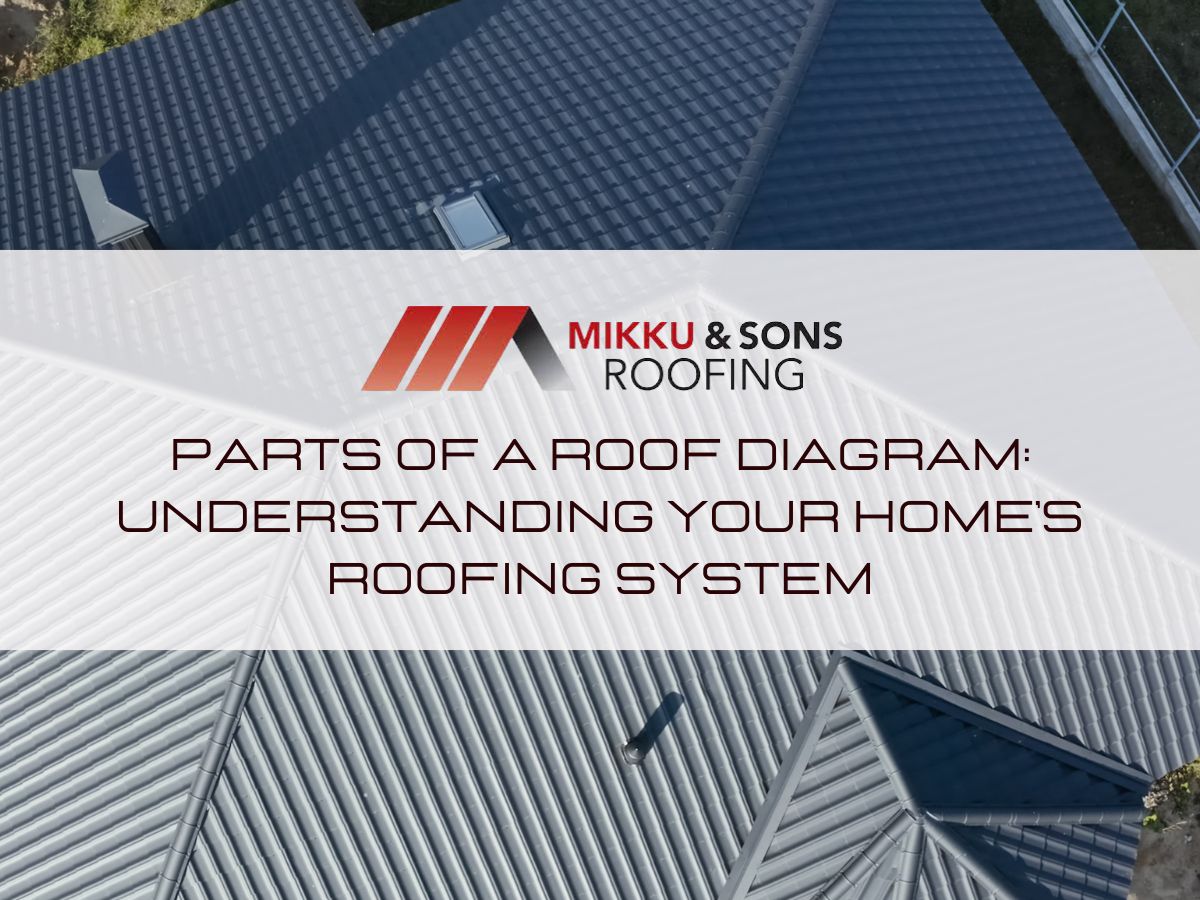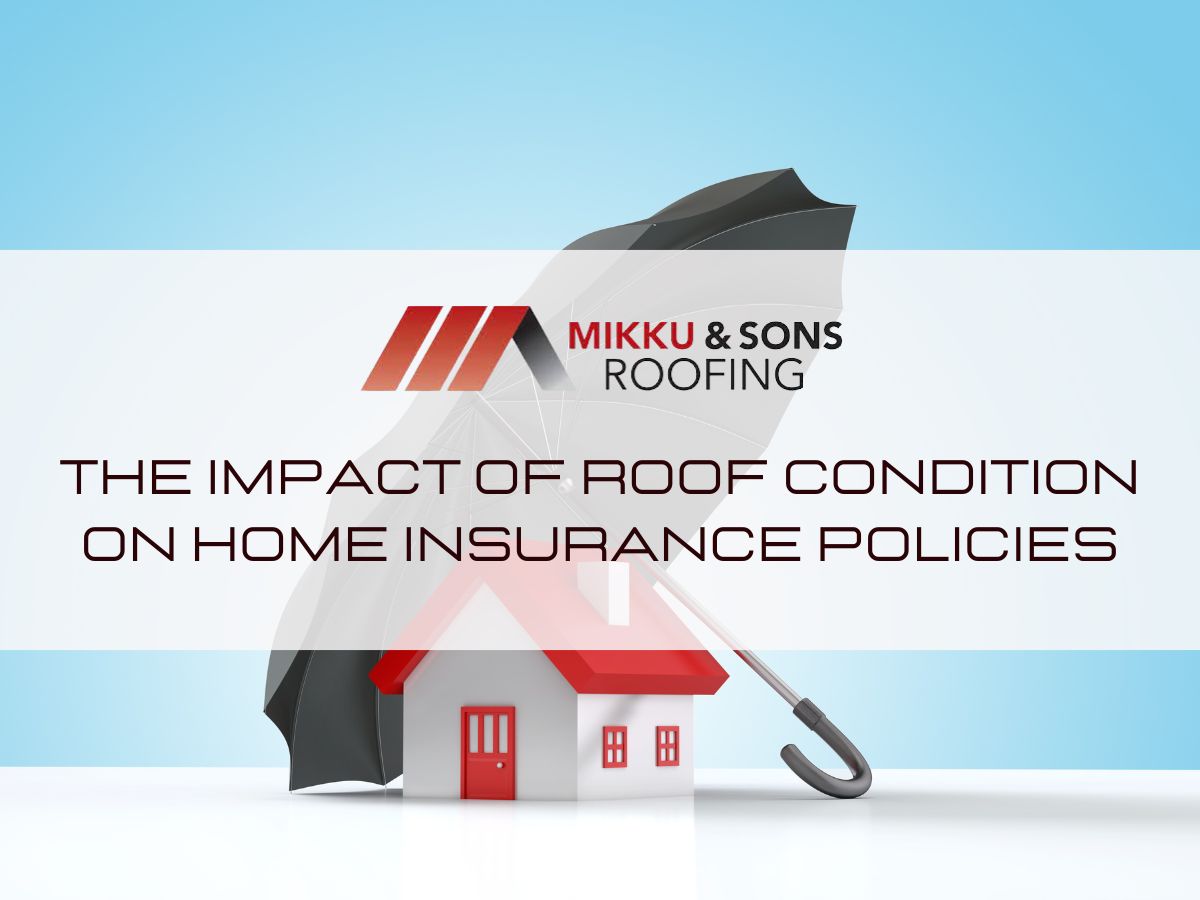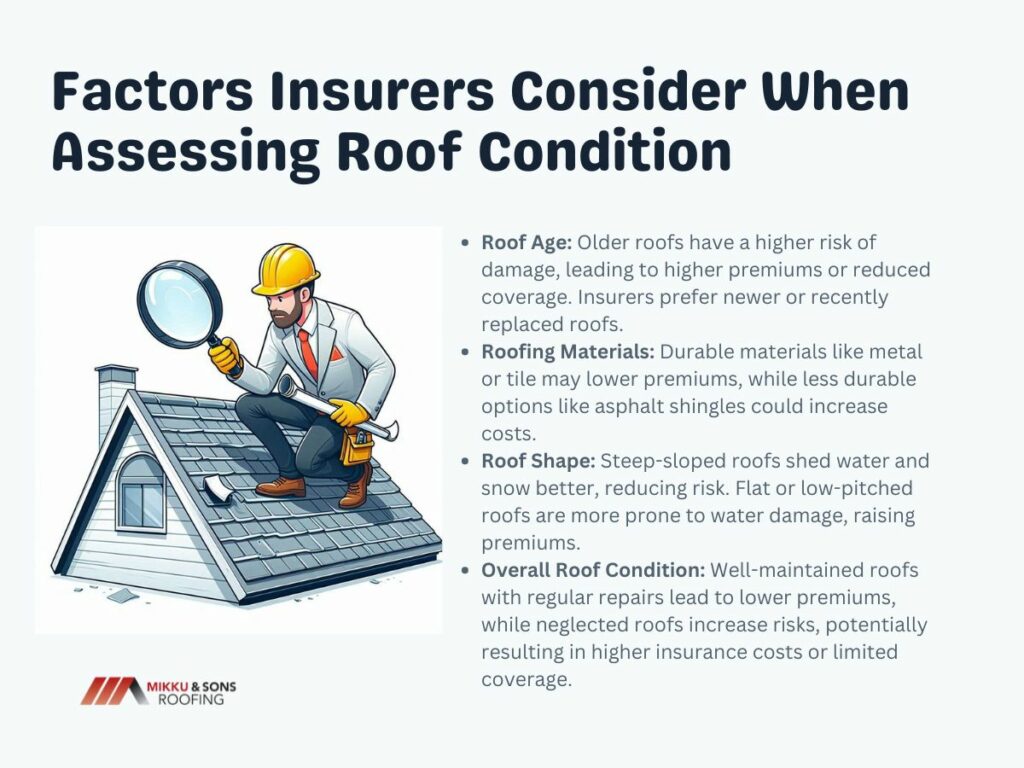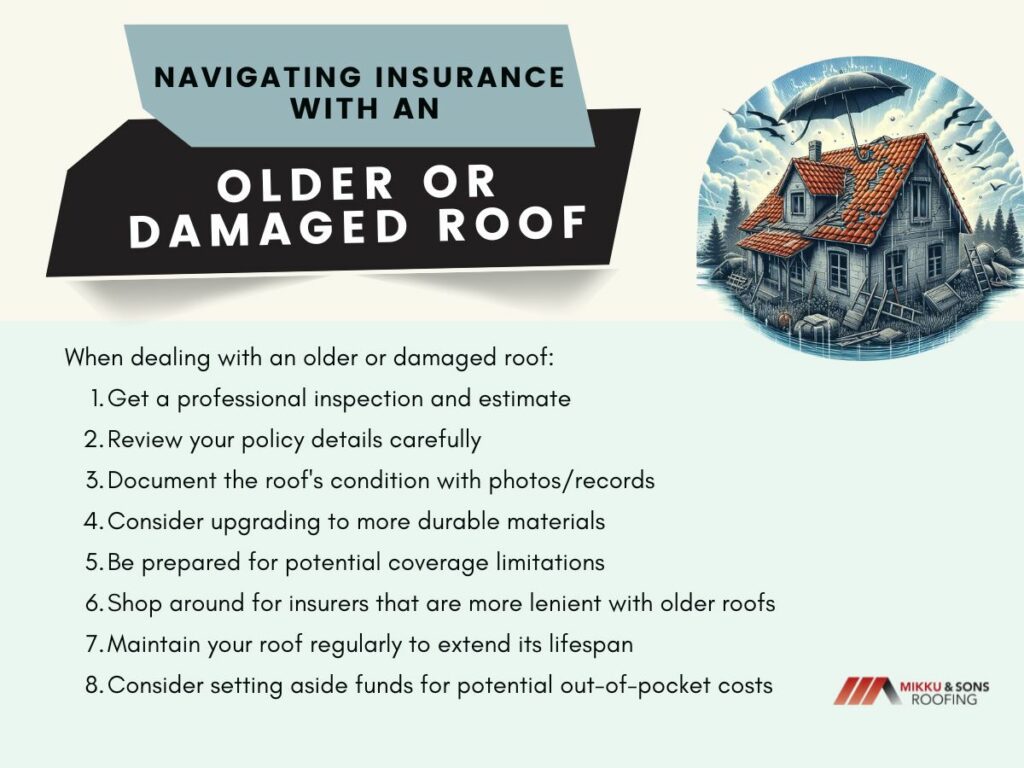

The roof is a critical component of your home, providing essential protection against weather, elements, and structural damage. Its condition plays a significant role in home insurance, affecting premiums, coverage, and claims. Insurers evaluate roof age, materials, and overall condition to assess risk and set rates.
A well-maintained roof can lead to lower premiums and better coverage, while a damaged or aging roof may increase costs or limit coverage options. Understanding how roof condition impacts insurance helps homeowners manage both their property and financial risk effectively. Let's look at the impact of roof condition on home insurance policies.
When determining home insurance premiums, insurers closely examine the condition of your roof. Several key factors influence their assessment and, consequently, the cost of your policy.

One of the primary considerations is the age of your roof. Older roofs are more prone to damage and wear, increasing the risk for insurers. A roof that is nearing the end of its expected lifespan may result in higher premiums or reduced coverage options. Insurers generally prefer newer roofs or those that have been recently replaced, as they are less likely to develop issues.
The type of roofing material you use also plays a significant role in insurance assessments. For example, asphalt shingles are common but may be less durable compared to metal or tile roofs. Metal roofs, while more expensive to install, are highly durable and fire-resistant, often leading to lower insurance premiums. Insurers may offer discounts for roofs made from materials that are less likely to sustain severe damage.
The shape and design of your roof can impact insurance rates as well. Roofs with steep slopes are generally better at shedding water and snow, reducing the risk of leaks and structural damage.
Conversely, flat or low-pitched roofs may be more susceptible to water damage and ice buildup, potentially resulting in higher premiums. Insurers assess these factors to determine the likelihood of roof-related claims.
Lastly, the overall condition of your roof is crucial. Regular maintenance and prompt repairs can prevent minor issues from escalating into major problems. Insurers may require proof of regular upkeep and maintenance, as a well-maintained roof is less likely to result in claims. Poorly maintained roofs can lead to higher premiums or limited coverage options, as they present a greater risk.
The roof condition is a critical factor for insurers due to its significant impact on property risk and claims. Here’s why it matters:
Roof damage is one of the leading causes of property claims. Severe weather events, such as storms, hail, and high winds, can cause extensive roof damage, leading to leaks, water intrusion, and structural issues. Additionally, gradual wear and tear from age can compromise a roof’s integrity, increasing the risk of damage.
As a result, insurers are keenly aware that roofs represent a substantial portion of potential claims. By assessing the condition of a roof, insurers can predict the likelihood of future claims and adjust premiums accordingly.
The state of a roof often reflects the overall maintenance and condition of the property. A well-maintained roof suggests that the homeowner is proactive about property care, which may correlate with fewer issues elsewhere in the home.
Conversely, a deteriorating roof can indicate broader maintenance problems, increasing the risk of other potential claims. Insurers use roof condition as a proxy for the overall risk associated with insuring a property. A roof in poor condition may signal a higher likelihood of additional claims, leading insurers to price policies to reflect this increased risk.
To manage risk effectively and ensure financial stability, insurers must accurately assess and price the risk associated with roofs. This involves evaluating factors such as roof age, materials, and overall condition.
By understanding these elements, insurers can set premiums that reflect the true risk of potential claims. This careful assessment helps insurers balance the need to provide affordable coverage for homeowners while mitigating their exposure to significant financial losses.
The condition of your roof plays a pivotal role in determining your home insurance premiums. Insurers use several factors to assess risk and set rates, including the age of the roof, the materials used, and the roof’s shape.
Newer roofs generally lead to lower insurance premiums compared to older ones. A new roof often means fewer issues and less risk of significant damage, which translates into fewer potential claims. Insurers view newer roofs as more reliable and less likely to require costly repairs or replacements in the near future.
Conversely, older roofs are associated with a higher risk of leaks, structural damage, and other issues that could lead to claims. As a result, insurers may charge higher premiums for homes with older roofs to account for this increased risk.
The type of roofing material used can also influence insurance costs. Durable materials such as metal, tile, or impact-resistant shingles offer greater protection against severe weather and damage. These materials are less likely to fail compared to traditional asphalt shingles, making them a lower risk for insurers.
Homeowners with durable roofing materials often benefit from reduced premiums as a result. Insurers may offer discounts for these materials because they contribute to the overall longevity and resilience of the roof.
The shape and design of your roof can affect insurance premiums as well. Roofs with steep slopes are more effective at shedding water and snow, reducing the risk of water damage and ice buildup.
In contrast, flat or low-pitched roofs are more susceptible to water pooling and structural stress, increasing the likelihood of damage and, consequently, higher premiums. Insurers consider the roof shape when evaluating risk, as it impacts the roof’s ability to withstand various weather conditions and reduce potential claims.
The condition of your roof is integral not only to determining insurance premiums but also to the scope of coverage your policy provides. Insurers are vigilant about roof conditions due to their direct impact on claim frequency and overall risk management.
Insurance policies often contain exclusions related to roof conditions. For example, many policies may not cover damage caused by poor maintenance or deterioration that results from neglect.
If a roof has been visibly neglected or is in disrepair, damage resulting from such issues might not be covered. This exclusion underscores the importance of maintaining a roof in good condition to ensure comprehensive protection. Homeowners should review their insurance policies carefully to understand any exclusions and make necessary adjustments to ensure they are fully covered.
A poorly maintained or damaged roof can lead to significant consequences, including the cancellation or non-renewal of your insurance policy. Insurers may decide to cancel coverage or refuse to renew a policy if the roof’s condition poses an elevated risk. This is because a compromised roof increases the likelihood of claims, which can be financially burdensome for insurers.
If a homeowner fails to address roof issues or neglects necessary repairs, insurers may see this as a significant risk and act to mitigate their exposure by terminating or not renewing the policy.
Regular maintenance is crucial for keeping insurance coverage intact. Routine inspections, prompt repairs, and general upkeep help prevent minor issues from escalating into major problems that could jeopardize your coverage.
By maintaining your roof in good condition, you not only reduce the risk of damage but also demonstrate to insurers that you are proactive about property care. This can help avoid issues with policy exclusions or cancellations and ensure that your coverage remains valid and comprehensive.
Dealing with insurance issues related to an older or damaged roof can be challenging. However, there are proactive steps you can take to address cancellations, find suitable coverage, and maintain insurability.

If your insurance policy is canceled or not renewed due to roof conditions, act swiftly to mitigate the situation. First, review the cancellation or non-renewal notice carefully to understand the reasons cited. Contact your current insurer to discuss possible options or appeals.
Sometimes, insurers may offer conditional reinstatement if you commit to making necessary repairs. If you need to find a new insurer, provide them with a detailed record of any recent repairs or upgrades to demonstrate that you are addressing the issues.
Finding insurance for a home with an older or damaged roof can be more challenging, but it is possible. Start by contacting insurance agents who specialize in high-risk properties or those familiar with homes that have roofing issues. They can help identify insurers willing to cover homes with older roofs.
You might also explore insurance companies that offer policies specifically designed for homes in need of repairs or with a history of roof issues. Consider working with a broker who can shop around for the best coverage options and rates for your situation.
Addressing roof repairs and replacements is crucial to maintaining insurability. Regular maintenance and timely repairs help prevent minor issues from escalating into major problems, reducing the risk of insurance cancellations.
A well-maintained roof not only improves the safety and value of your home but also makes it more attractive to insurers. If your roof is nearing the end of its lifespan, consider a full replacement. Investing in a new roof can enhance your home’s insurability and potentially lower your insurance premiums by demonstrating reduced risk.
The condition of your roof significantly impacts home insurance, influencing premiums, coverage, and risk assessments. Key factors include roof age, material durability, and shape. Regular maintenance and timely repairs are crucial to avoid higher premiums, policy cancellations, or reduced coverage.
To ensure you’re adequately protected, review your insurance policy for any exclusions related to roof condition and keep your roof in optimal shape. Proactive management of your roof not only helps maintain lower insurance costs but also safeguards your home against potential risks. Regular checks and updates are essential for both coverage and peace of mind.
